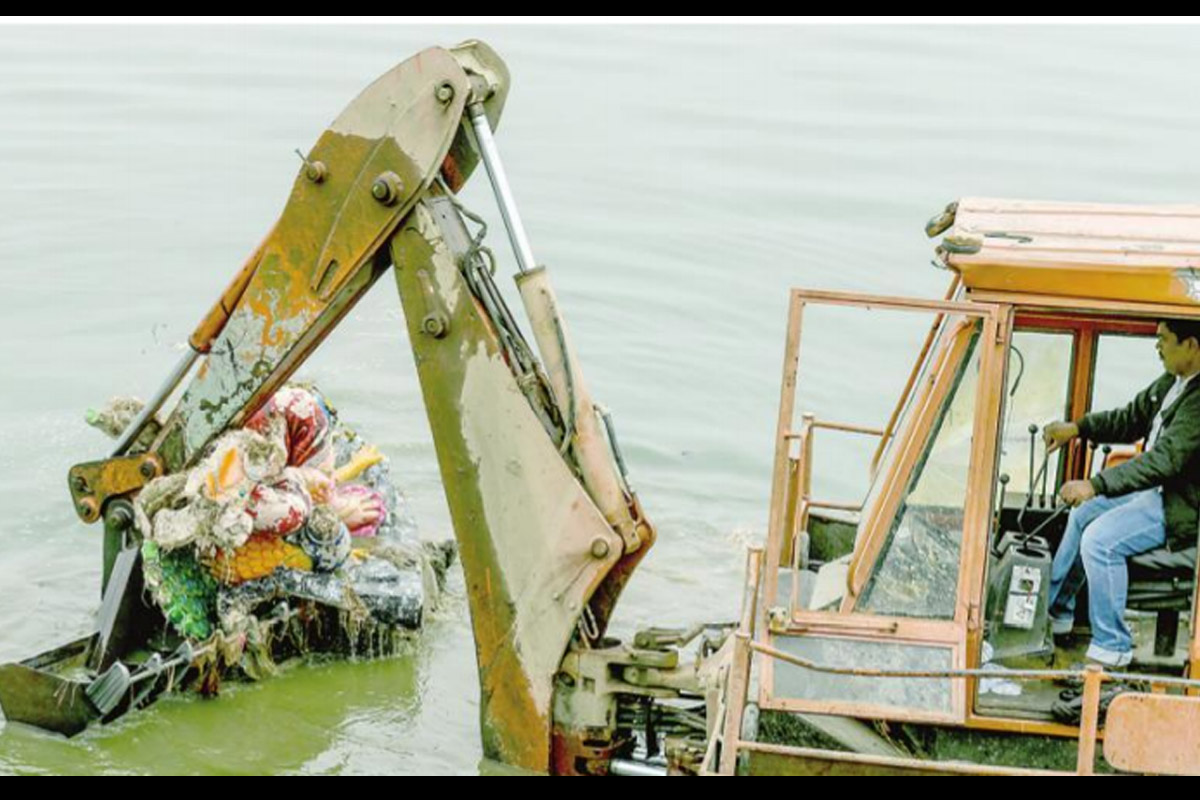MCD budget to be finalised only after public consultation : Delhi Mayor
She said that the budget draft prepared by the MCD officials will be put up in the house by the Commissioner on Saturday
It is commendable that the Union Minister of Environment, Forest and Climate Change through this Draft Notification has made an outstanding effort to resolve the practical difficulties of border areas and their development by considering the exemption of public consultation.

The draft Environmental Impact Assessment 2020 was issued by the Ministry of Environment & Forest vide Gazette Notification No. S.O. 1199 (E) dated 23 March 2020, and is a simple, bona fide and strategic tool which is strong enough to protect the environment. The draft EIA 2020 has allowed us to proceed with a positive note since the green ministry has honestly simplified the structure and brought greater transparency and accountability by integrating all amendments and office memoranda since September 2006, and has removed any confusion among the environmental fraternity. The focus is to improve the system’s capabilities to monitor and implement regulatory requirements.
It is commendable that the Union Minister of Environment, Forest and Climate Change through this Draft Notification has made an outstanding effort to resolve the practical difficulties of border areas and their development by considering the exemption of public consultation. This includes only projects concerning national defense and security or involving other strategic considerations as determined by the Central government including all linear projects in the border areas. It may be worthwhile to note that normally, oil and gas facilities and defense installations are located in the border and LAC areas and practically there is no other industry operating in these difficult terrains.
Hence, the process of proposing the exemption of public consultation in these tough terrains will not only enhance energy security of the country but also protect national defense interests without compromising the issue of Environment Protection. The draft notification also facilitates such exemption to industries having no impact or less impact on the environment such as industries with clean technologies and Micro, Small and Medium Enterprises as these will contribute to the country’s GDP. Further, reduction in public hearing time from 30 to 20 days is a welcome step of the green ministry as this will enable applicants to obtain environmental clearances faster by using advanced communication/digital technology without compromising on the stakeholder’s views about the project.
Advertisement
The proposed EIA notification is comprehensive and will fast-track ECs for small projects. It will also encourage modernisation, rationalisation of categorisation of projects and public consultation process, extend validity of EC and ToR aligning with other acts and strengthen the monitoring mechanism, for example mining projects: 50 years (subject to commencement of mining within 10years); river valley projects: 15 years; nuclear projects: 15years and other projects:10 years.
For the past few months, we have heard and read a lot of public outcry in the media, by various activists and environmental groups on the issue of “violation” termed as regularisation of post facto violations. It is a sheer misinterpretation and an absolute myth.
One must clearly understand that the spirit of the notification and existing provisions of the EPA will not permit any environmental violation to proceed without any scrutiny in the process of EC. Such projects are subject to rigorous appraisal with full wisdom and due diligence of the EAC and will be considered on strict merit. If projects qualify on merit, only then will these be considered; otherwise they will be punished and penalized as per EPA. Even the Supreme Court has clearly said that we cannot close down industry but may impose penalty/ fine for violations. Therefore, the draft notification is also in line with the Supreme Court order including EPA. It is essential to understand that there will only be prospective environmental clearances based on merit coupled with rigorous penalties that will be imposed on violating companies. In my opinion “post-facto regularization” is mere false propaganda.
It may also be seen that this draft EIA also decentralises certain category of projects by empowering states to appraise at their level. This prevents PPs and consultants from running with their full teams to Delhi and at the same time helps PPs and consultants from incurring financial burden besides significant saving on carbon footprint. The other salient feature of this draft notification is incorporation of Technical Committee and Monitoring Committee in addition to the EAC which was not there in the 2006 EIA notification. This creation will take care of aspects of sustainable development.
To conclude on a positive note, the 2020 draft notification has a clause dedicated to definitions to several terms related to EIA. It will be very useful in the sense that it consolidates and clarifies every term mentioned in the proposed notification and brings about absolute transparency. At the same time it provides fair interpretation to all concerned.
Certainly, this notification will be a milestone for environment protection, sustainable development and for Climate Mitigation in times to come. But of course, “Beauty lies in the eyes of beholder.”
The writer is chairman, Expert Appraisal Committee, Ministry of Environment, Forest & Climate Change, Government of India.
Advertisement